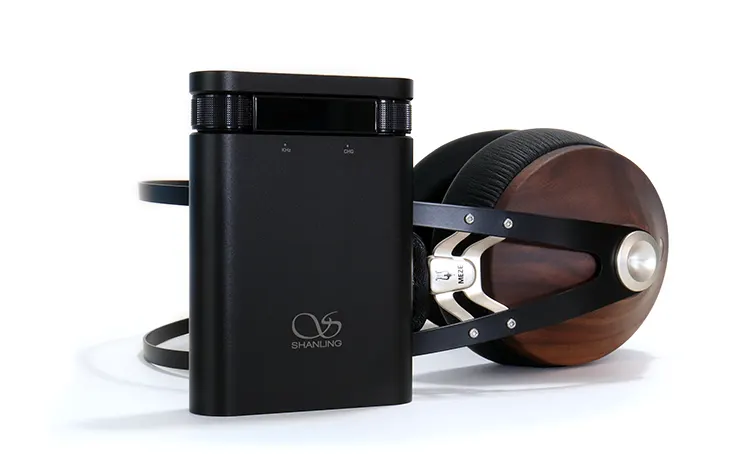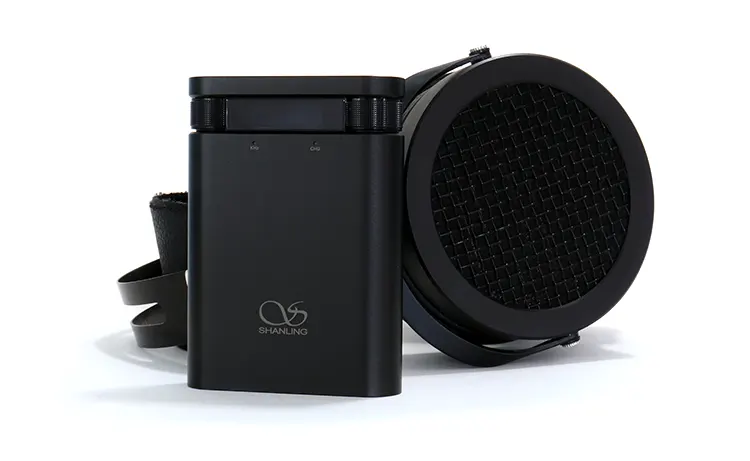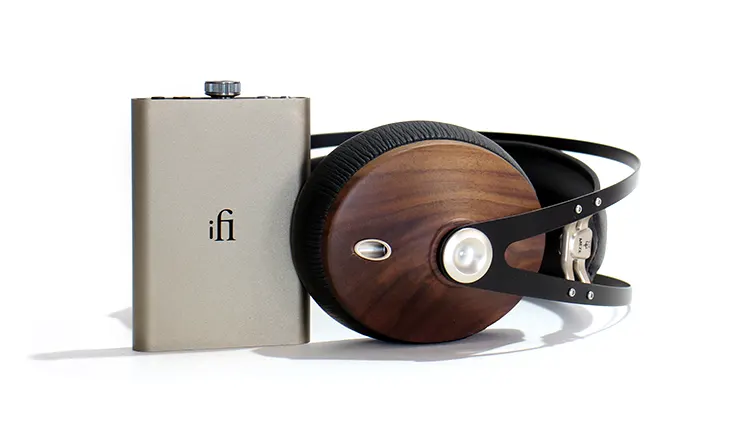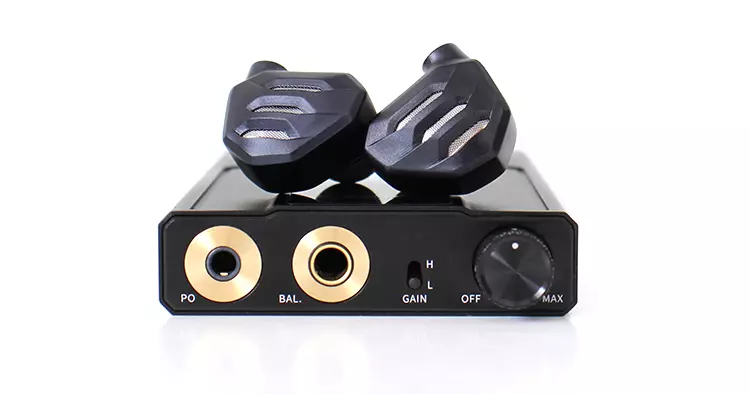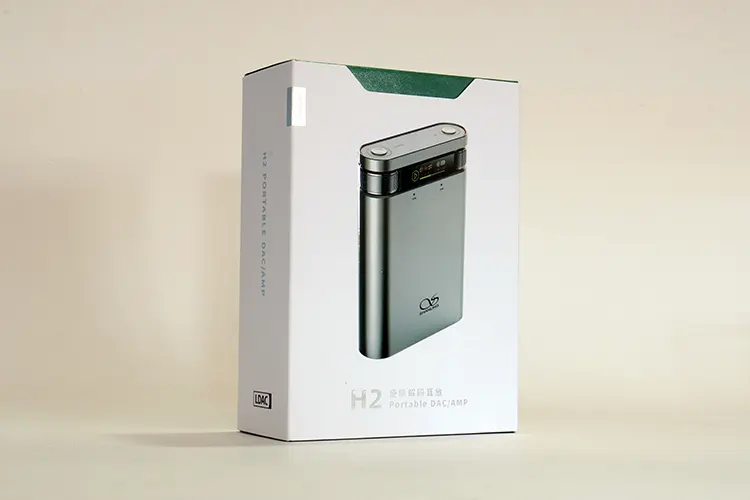Sound Impressions
The Shanling H2 is not a powerhouse but I still managed to adequately drive the HIFIMAN Sundara which were chosen as the headphones to use for this listening test since they’re one of the most popular headphones out there.
I also used FiiO’s recently reviewed FA19 and the ORIVETI OH700VB for an IEM perspective. I also pulled out the HIFIMAN RE2000 gold series and the Svanar to gauge sound quality.
Summary
I’ve always stated that Shanling products sound smooth and restrained to me, are well-behaved, and have a mild-mannered tonality, especially their DAC amplifier dongles and DAPs.
The H2 is not an exception. The H2 will satisfy those who are looking for a relaxed listening experience, absent of peaks and intensity.
There’s still lots of punch produced by the H2 and dynamics are well proportioned. Ample bass representation is produced alongside a smooth midrange response, followed by a controlled, and polite treble response.
Some might interpret this sound description as trying to describe a warm character when, in fact, there seems to be a successful balancing act here between frequency response linearity and a warm presentation. The overall presentation is full-bodied and amply extended.
The H2 signature produces a full spectrum sound and a well-extended one with a proper amount of bottom end alongside a well-extended top end that seems held in check from the rest of the spectrum. Laid back and relaxed is my general description of this sonic signature.
Staging and Dynamics
The Shanling H2 doesn’t produce the largest soundstage out there but it’s not small in scope and size either. It’s what I consider to be a medium-sized panorama, however, it paints an accurate one for the listener, especially in the outer perimeters.
The word medium itself fits most of the performance parameters of the H2. There’s a medium amount of power, a medium-sized soundstage, and a medium amount of punchiness and energy behind notes that fall within the bass region in particular, but it seems almost subdued in general.
Synergy
Power
When we received the H5 for review, Marcus noticed the unit’s high output impedance over the H7. However, it seems Shanling took note of that and released the H2 with an amplification section that obtained an acceptable rating of 0.4Ω on the single-ended side and 0.8Ω on the balanced side.
For further assurance of an acceptable output impedance, I used my set of the ORIVETI OH700VB which is a 12Ω multi-driver IEM.
This IEm gave me a funky result within the high-frequency ranges when paired with the iFi Audio GO bar Kensei which has an output impedance rating of 1.0Ω on the balanced side. On the H2 this set did not produce any funkiness.
It seems Shanling mostly focused on the single-ended output and the gain settings to work well specifically with IEMs and to avoid such impedance mismatches that can cause funkiness, in particular within the high frequencies.
On the other side of the coin, I didn’t notice a lack of power when driving most of my full-sized headphones off the balanced tap. My Sundara’s were adequately driven and the bass response, in particular, was ample enough but beyond that was another story.
Pairing
Following up on the above statements, notice I mentioned the Sundara and not the HE400se which on the surface would seem to pair just as well with the H2.
However, the driving power for this pair was lacking and it seems they set the limit. I also tried the Dekoni Blue with the same lack of power result.
There is a power limit here, even on the balanced tap and I would consider the H2 if you plan to use any IEM. For full-sized headphones, the rule seems to be that what you use must have an efficiency level that surpasses the above-mentioned model.
The H2 amplification caters heavily to today’s bright-sounding headgear. However, they still manage to pair well with the Sundara which is a naturally smooth-sounding headphone and others alike. However, the combination, surprisingly, doesn’t sound overly subdued.
Another successful pairing was obtained with the Meze Audio 99 Classics. It produced warmth to spare but some might prefer a lively presentation over this.
I prefer the warmth for nighttime listening and this pairing produced a calming musical experience well worth the price of admission.
Select Comparisons
Please note, the Shanling H5 was not included in these comparisons as it was reviewed by Marcus and I do not have access to it.
iFi Audio hip-dac 3
Technical
The iFi Audio hip-dac seems to be a staple piece in the audio scene since the first iteration was released, and every revision has gotten a touch better.
Not much has changed from the first hip-dac model except for the addition of the IEMatch feature and a color swap. However, the largest sonic changes took place at the power circuitry stage which was refined to obtain a lower noise floor.
One of the features that make the hip-dac 3 popular and attractive is the well-implemented XBass which helps a lot in combating issues with low bass output inherent in most modern-day excessively bright headgear.
The addition of the iEMatch along with the Power Match feature expands the hip-dac 3’s range of IEMs it can accommodate over its predecessors. Plus, it also includes a similar dual headphone jack array that seems to be conservatively rated at a maximum of 400mW.
The above features combined litigate the issue that is inherent within the hip-dac 3 and that’s the channel imbalance at the very bottom of the analog volume control. However, the analog control does add some audible benefits.
Design
I like the idea of a flask-shaped device for portable use and prefer top-mounted headphone jacks. However, the headphone plugs can get in the way of the analog volume knob at times on the hip-dac 3 so there seems to be a give-and-take here when it comes to ergonomics.
The Shanling side-mounted volume knob is less obtrusive and could offer better ergonomic functionality. However, at this point, I have to mention the obvious and that is the size difference. The H2 is twice the size and seems twice as heavy as well.
Both models use a curved-side design but the hip-dac 3 does have some very sharp edges on the top and bottom borders that can almost shave hair. The H2 chassis is smooth overall, mimicking its sound characteristics.
Performance
There is a thesis and antithesis display here since both devices seem to have different sonic outcomes in certain ways. The Shanling H2 is a smooth-sounding device and has a calm general characteristic but is not absent of dynamics.
The hip-dac 3 on the other hand has an increased vividness aspect about it. The hip-dac 3 seems the more potent unit and seems to produce higher amounts of current which allows it to drive some full-sized headphones to a slightly higher volume level.
IFI uses high gain settings as a method to squeeze lots of details from the source and perhaps that is the source of the hotter-sounding overall sonic characteristics of the hip-dac 3.
However, I do like it more, especially when XBass is engaged. It’s what I call welcomed musical color.
FiiO Q11
Technical
The Q11 has one major advantage and that is the asking price. If you’re on a budget, FiiO offers the Q11 with a single CS43198 which is not a bad DAC chip at all.
It comes with an attractively rated amplifier section that’s capable of 650mW off the balanced connection and 165mW on the single-ended tap.
The Q11 does perform well but only with a basic set of digital files like PCM and DSD. It omits MQA unfolding as well. It uses a single rear-mounted USB-C port as its sole input with no Bluetooth capability and that’s where its limitations lie.
The Q11 counts on a rotary volume knob which clicks to turn the unit on and a two-gain settings via a front-mounted switch. Surprisingly, the Q11 can output an SPDIF signal in case you want to use the Q11 as a DAC with a digital out.
Design
The FiiO Q11 is a smaller unit but the overall body style has an almost retro construction that reminds me of many car amplifier design models that fit the chassis with fins to increase cooling efficiency even though the Q11 doesn’t need much cooling.
FiiO did incorporate a stylish backlit glass that lets you see all the internal components plus the illumination color indicates what bitrate is being played through the unit so it has some usefulness besides just being a pretty light.
One aspect that was a surprise to me is that the FiiO Q11 comes with more accessories compared to the H2. It comes with three cables, a butterfly-shaped rubber band, and a rubber mat which are accessories not included with the H2 offered at a higher cost.
Performance
The Q11 has a neutral general character in its sound signature. However, it has plenty of dynamics to make the music sound exciting. You can also apply some digital filters to further tweak the overall sound signature via FiiO’s Control app which is compatible with the Q11.
FiiO seems to focus most of its energy on making the Q11 sound good, omitting a lot of hardwired features. However, the app compensates by offering further sonic adjustments.
Even though the FiiO Q11 is tuned to be neutral, it can get strident on loud passages. You have to moderate the volume compared to the H2 since it seems more forgiving at high volume levels.
The Q11 does have a much higher posted output impedance at 1.2Ω and 2.0Ω with a 32Ω load which should not matter much. The bottom line and major choice here lies between choosing smoothness with balance over neutrality with vividness.
My Verdict
The Shanling H2 offers a lot of features and functionality in a small package that will appeal to many potential buyers looking for a smooth audio experience and lots of functionality in a compact and affordable portable DAC and headphone amplifier.
It is also an appealing proposal to have the ability to store your music collection within a portable DAC amplifier and alleviate one’s mobile device’s storage. However, the drawback is that you have to access these files through the Eddict app.
The bonus for me is the Shanling H2’s ability to go beyond portable use, feeling right at home in a desktop setup scenario just like its more expensive siblings. This is a good thing at this price point.
Shanling H2 Technical Specifications
- Dimensions: 71.5 x 100 x 21.5 mm
- Weight: 185g
- Screen: 0.99 inch LCD
- MicroSD audio format: DSD (iso, dsl, dff) DST not supported
- ISO / DXD / APE / FLAC / WAV / AIFF / DTS / MP3 / AAC / OGG / ALAC / MP2 / M4A / AC3 / M3U / M3U8 / OPUS
- MicroSD playback: PCM192 / DSD128 / DSD64 native
- USB DAC: PCM384 / DSD256 native
- MicroSD card: Supports up to 2TG
- DAC: Cirrus Logic CS 43198
- Digital filters: four built-in filters
- Bluetooth: 5.0 receiver
- Bluetooth codec support: LDAC / SBC / AAC *the H2 only functions as a Bluetooth receiver


